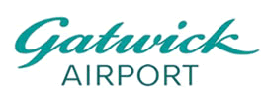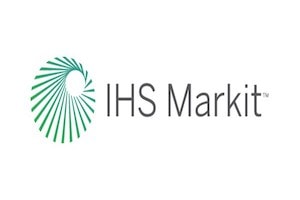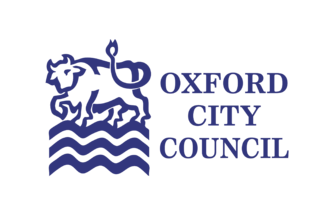You Ask, We Answer: Which Observability Platform is Truly Best-in-Class?
Here at Sirius Open Source, we often get asked, "Who is the definitive Best-in-Class observability platform? Should we choose Datadog, Dynatrace, or stick with the open standard, Grafana?" This is a very good question, and one that deserves a clear, honest answer. We understand that selecting the right platform is rarely a simple feature comparison; it is a long-term economic and strategic decision a business must live with for years.
We want to be upfront: There is no single "Best in Class" solution for every organization, as the optimal platform depends heavily on your organizational DNA, prioritizing either velocity, automated insights, or cost control at scale. Grafana has become the ubiquitous operating system for observability due to its open standards and flexibility. However, the truth is, proprietary vendors like Datadog offer an out-of-the-box experience that is superior for teams prioritizing minimal operational toil, but this comes at a significant premium and increased vendor lock-in risk.
This article will explain the key architectural and economic factors that position different platforms as "Best in Class" for specific needs, ultimately defining why Grafana emerges as the most strategic choice for engineering-led organizations seeking autonomy and long-term viability. We aim to be fiercely transparent, allowing you to make the most informed decision possible.
The Philosophical Foundation: Defining "Best in Class"
The observability market is characterized by a fundamental philosophical divergence between flexibility and integration. Choosing a "Best in Class" platform is a strategic decision rooted in whether your organization prefers a modular, open ecosystem or a tightly integrated, proprietary system.
| Philosophical Model | Grafana (Big Tent) | Datadog/Dynatrace (Walled Garden) |
|---|---|---|
| Data Strategy | Visualizes data where it already lives (decentralized data gravity). | Value predicated on ingesting data into a unified, proprietary store. |
| Core Value | Flexibility, Open Standards (OpenTelemetry), and Vendor Lock-in avoidance. | Speed of implementation and cohesive out-of-the-box experience. |
| Organizational Fit | Valuing autonomy and cost-efficiency at scale. | Prioritizing velocity and standardization (often at a premium cost). |
Grafana has evolved from a visualization tool into a comprehensive, composable observability ecosystem known as the LGTM stack (Loki, Grafana, Tempo, Mimir). This architecture acts as a unifying translation layer to query disparate data silos, minimizing the "data tax" of centralization and preserving vendor neutrality.
Best in Class for Velocity and Automation: The Proprietary SaaS Leaders
For organizations prioritizing rapid setup, standardization, and minimal operational toil ("Buy" model), proprietary SaaS platforms are generally considered superior in their respective niches.
Datadog: The Velocity Leader
Datadog is engineered to minimize Time to Value (TTV). The monolithic Datadog Agent automatically detects running services and begins collection immediately, requiring less cognitive load from product developers.
Best in Class for: Organizations focused on velocity and standardization who are comfortable absorbing premium costs.
The TCO Risk: Datadog's pricing is based on "Host" and "Custom Metrics". This model scales super-linearly, making it notoriously expensive at scale, where high-cardinality data leads to significant and unpredictable bills ("billing shock"). A significant migration trend exists where companies move from Datadog to Grafana due to escalating renewal costs.
Dynatrace: The Automation Leader
Dynatrace targets the complex enterprise market with a focus on Causal AI.
Best in Class for: Large-scale enterprises requiring automated root cause analysis. Its "Davis" AI engine uses a deterministic model based on system topology (Smartscape), offering a level of automated insight that justifies its premium cost for mission-critical environments.
The Pricing Model: Dynatrace pricing is complex, based on "Host Units" tied to RAM size, penalizing memory-heavy modern workloads.
Grafana: Best in Class for Autonomy, Control, and Scale
Grafana emerges as the Best in Class solution for engineering-led organizations that demand maximum control over their architecture and total cost of ownership (TCO).
Architectural Superiority Through Open Standards
Grafana’s strategic advantage is its deep commitment to open standards, mitigating long-term vendor lock-in risk.
OpenTelemetry Adoption: Grafana Labs has aggressively embraced OpenTelemetry (OTel), releasing Grafana Alloy (a distribution of the OTel Collector). Alloy is a vendor-agnostic, programmable pipeline that can ingest data and route it simultaneously to multiple backends. This commoditizes the data collection layer, allowing companies to de-risk vendor transition by simply changing configuration, unlike proprietary agents (e.g., Datadog Agent) that lock users in.
Observability as Code (OoC): Grafana supports advanced GitOps workflows through features like Git Sync in v12, allowing dashboards to be managed via version control (JSON), moving teams away from fragile manual editing ("ClickOps").
Economic Superiority Through Predictability
Grafana Cloud’s economic model offers features specifically designed to counteract the cost volatility inherent in monitoring data.
95th Percentile Billing: Grafana Cloud uses the 95th percentile billing model for metrics. This calculates usage excluding the top 5% of usage spikes (approximately 36 hours monthly), acting as a built-in insurance policy against cost overruns from major incidents or load testing, offering significant financial predictability.
TCO Arbitrage: The decision often boils down to labor cost. The high, fixed cost of specialized SRE labor required to manage the self-hosted LGTM stack (often exceeding $200,000 to $300,000 annually per burdened FTE) makes migrating to a managed service like Grafana Cloud fiscally advantageous for many organizations.
Supporting the Best in Class Ecosystem
Regardless of whether Grafana is self-hosted or managed via Grafana Cloud, successful, high-scale adoption requires specialized commercial expertise.
The Mandatory Security Tax
For regulated enterprises (finance, government, healthcare), the Enterprise license is a mandatory cost driver, not an optional upgrade. Crucial governance and security features—such as SAML, Enhanced LDAP, Audit Logs, and detailed Role-Based Access Control (RBAC)—are gated behind the Enterprise offering.
The Role of Strategic Integration
The complexity of the Grafana ecosystem has fostered a diverse market of Managed Service Providers (MSPs) and specialized technical consultancies (focusing on optimization and custom solutions).
Summary: The Final "Best in Class" Assessment
The decision framework for "Best in Class" hinges on core organizational priorities. Grafana stands as the de facto open standard for observability interaction—the "Switzerland" of monitoring—empowering the user to control their data.
| Organizational Priority | Best-in-Class Platform | Key Differentiator |
|---|---|---|
| Autonomy, Cost Control, and Technical Scale | Grafana (Open Source/Cloud Hybrid) | Vendor-agnostic agents (Alloy) and predictable billing via 95th percentile model. |
| Velocity and Minimal Operational Toil | Datadog (Proprietary SaaS) | Superior "out-of-the-box" experience and reduced labor complexity. |
| Automated Root Cause Analysis | Dynatrace (Proprietary SaaS) | Deterministic Causal AI (Davis) for identifying failure root causes. |
| Deep Security Forensics (Logs) | Elastic Stack/Splunk | Full-text indexing paradigm superior for ad-hoc, unstructured log exploration. |
For the modern containerized enterprise, the composable nature of the Grafana ecosystem offers the most compelling path forward to balance scale with cost efficiency. This platform rewards organizations willing to invest in governance and optimization, offering long-term vendor neutrality and control.
















































